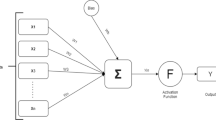Abstract
Stock price forecasting is the most difficult field owing to irregularities. Therefore, the stock price forecasting and recommendation is an extremely challenging task. In this paper, a big data framework for stock price forecasting using fuzzy time series is proposed in user-friendly form. The method fully capitalizes on the two key technologies, fuzzy set theory and classical time series forecasting methods, to deal with the stock price forecasting. First, using the fuzzy time series the method predicts the fuzzy trend of the forecasted data based on historical stock big data. Then, an autoregressive model is utilized to determine the fluctuation quantity of the forecasted data. Finally, the forecasted stock price is obtained by integrating trend prediction with fluctuation quantity. TAIEX are employed to illustrate the proposed forecasting framework and to compare the forecasting accuracy between the proposed forecasting framework and the existing methods. The experimental results indicate that the proposed forecasting framework produces better forecasting performance.



Similar content being viewed by others
References
Aladag CH, Basaran MA, Egrioglu E, Yolcu U, Uslu VR (2008) Forecasting in high order fuzzy time series by using neural networks to define fuzzy relations. Expert Syst Appl 36(3):4228–4231
Chen SM (1996) Forecasting enrollments based on fuzzy time series. Fuzzy Sets Syst 81:311–319
Chen SM (2002) Forecasting enrollments based on high-order fuzzy time series. Cybern Syst 33:1–16
Chen SM, Chen CD (2011) TAIEX Forecasting based on fuzzy time series and fuzzy variation groups. IEEE Trans Fuzzy Syst 19(1):1–12
Chen SM, Hwang JR (2000) Temperature prediction using fuzzy time series. IEEE Trans Syst Man Cybern Part B Cybern 30(2):263–275
Chen SM, Wang NY (2010) Fuzzy forecasting based on fuzzy-trend logical relationship groups. IEEE Trans Syst Man Cybern Part B Cybern 40(5):1343–1358
Chu HH, Chen TL, Cheng CH, Huang CC (2009) Fuzzy dual-factor timeseries for stock index forecasting. Expert Syst Appl 36:165–171
Huarng K (2001) Effective lengths of intervals to improve forecasting in fuzzy time series. Fuzzy Sets Syst 123(3):387–394
Huarng K, Yu HK (2006) Ratio-based lengths of intervals to improve fuzzy time series forecasting. IEEE Trans Syst Man Cybern Part B Cybern 36(2):328–340
Jilani TA, Burney SMA (2008) A refined fuzzy time series model for stock market forecasting. Physica A 387:2857–2862
Jilani TA, Burney SMA (2008) Multivariate stochastic fuzzy forecasting models. Expert Syst Appl 35:691–700
Lee LW, Wang LH, Chen SM, Leu YH (2006) Handling forecasting problems based on two-factors high-order fuzzy time series. IEEE Trans Fuzzy Syst 14(3):468–477
Lee LW, Wang LH, Chen S-M (2007) Temperature prediction and TAIFEX forecasting based on fuzzy logical relationships and genetic algorithms. Expert Syst Appl 33:539–550
Li ST, Cheng YC, Lin SY (2008) A FCM-based deterministic forecasting model for fuzzy time series. Comput Math Appl 56:3052–3063
Liu HT, Wei ML (2009) A distance-based fuzzy time series model for exchange rates forecasting. Expert Syst Appl 36:8107–8114
Singh SR (2009) A computational method of forecasting based on high-order fuzzy time series. Expert Syst Appl 36:10551–10559
Song Q (2014) On a new framework of autoregressive fuzzy time series models. Industrial Engineeering & Management Systems 13(4):357–368
Song Q, Chissom BS (1993) Forecasting enrollments with fuzzy time series–Part I. Fuzzy Sets Syst 54(1):1–9
Song Q, Chissom BS (1993) Fuzzy time series and its models. Fuzzy Sets Syst 54(3):269–277
Song Q, Chissom BS (1994) Forecasting enrollments with fuzzy time series–Part II. Fuzzy Sets Syst 64(1):1–8
Sullivan J, Woodall WH (1994) A comparison of fuzzy forecasting and Markov modeling. Fuzzy Sets Syst 64(3):279–293
Teoh HJ, Chen TL, Cheng CH, Chu HH (2009) A hybrid multi-order fuzzy time series for forecasting stock markets. Expert Syst Appl 36:7888–7897
Tsaur RC, Yang JCO, Wang HF (2005) Fuzzy relation analysis in fuzzy time series model. Comput Math Appl 49:539–548
Wang NY, Chen SM (2009) Temperature prediction and TAIFEX forecasting based on automatic clustering techniques and two-factors high-order fuzzy time series. Expert Syst Appl 36:2143–2154
Yu HK (2001) Weighted fuzzy time-series models for TAIEX forecasting. Physica A: Statistical Mechanics and its Applications 349(3/4):609–624
Author information
Authors and Affiliations
Corresponding author
Rights and permissions
About this article
Cite this article
Wang, W. A big data framework for stock price forecasting using fuzzy time series. Multimed Tools Appl 77, 10123–10134 (2018). https://doi.org/10.1007/s11042-017-5144-5
Received:
Revised:
Accepted:
Published:
Issue Date:
DOI: https://doi.org/10.1007/s11042-017-5144-5




